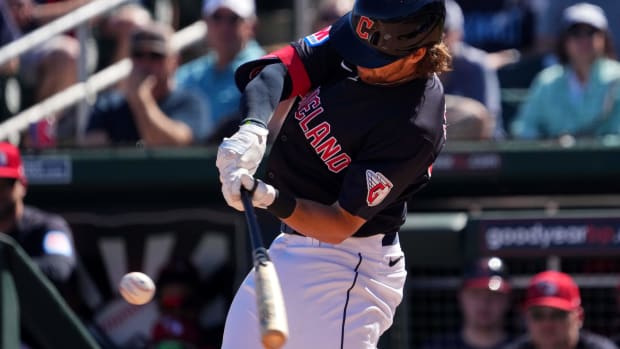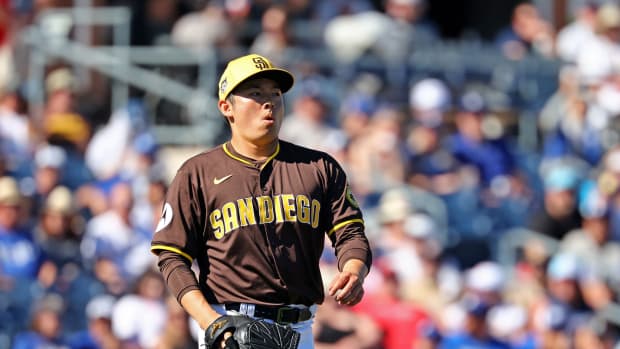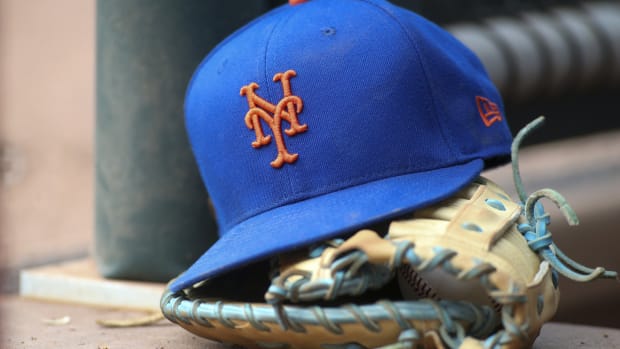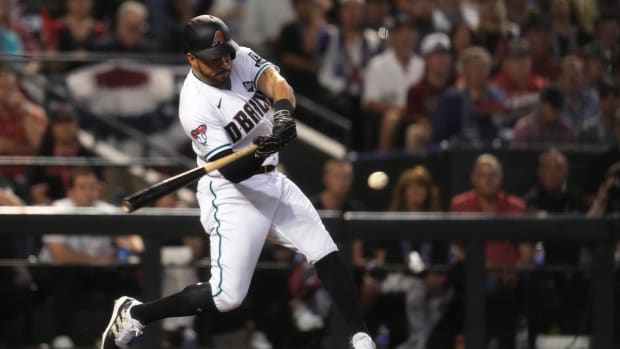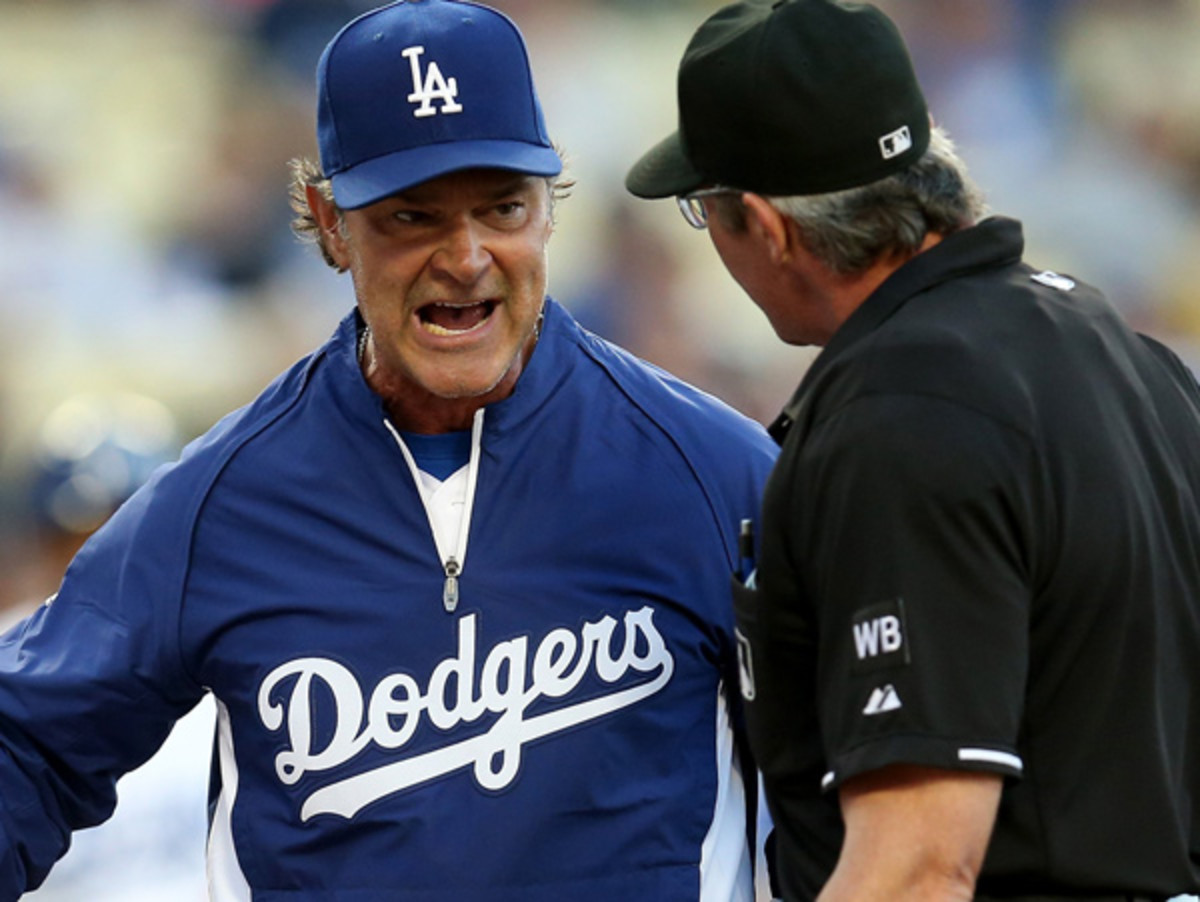
Can Dodgers repeat 2013 run to catch Giants in National League West?
Don Mattingly and the Dodgers trail San Francisco by 7 1/2 games in the NL West. (Stephen Dunn/Getty Images)
“I really think you should talk to the [players]. I’m tired of answering the questions, honestly… It’s just being basically s-----. We’re just not that good.”
Those words from Dodgers manager Don Mattingly following his $241 million team's 2-1 loss to the White Sox last Wednesday, appear in a lengthy story about Mattingly and the National League West division champions by Tom Verducci that is in the June 16 edition of Sports Illustrated. Within the piece, Verducci contrasts last summer's historic 42-8 run — a 50-game stretch that began June 22 and was last surpassed by the 1906 Cubs — with Los Angeles' mediocrity (83-93) before and since.
On the heels of Mattingly's outburst, the Dodgers have won four out of five over the Rockies and Reds, all on the road. And while they're unlikely to peel off another 42-8 stretch, the question now is whether or not they can surmount the Giants' 7 1/2-game lead to reclaim division superiority.
The odds — in this case the Baseball Prospectus Playoff Odds — are against them. That formula use a Monte Carlo simulation to account for run differential, strength of schedule, expected distribution of playing time and performance (via PECOTA projections). Keeping in mind that PECOTA projected Los Angeles to be the best team in baseball by a whopping nine games at the outset of the year, and is thus more optimistic than most that it will play up to its potential, the system still gives the Giants (currently 42-23) a 74.7 percent chance at winning the division, with the Dodgers (35-31) at 24.9 percent and the slumping, decimated Rockies at 0.3 percent.
On paper, L.A. certainly appears to be strong. It has the league's third-best run differential (+31) behind only those of San Francisco (+57) and Washington (+46), and while it has underperformed its first-order Pythagorean projection — based on runs scored and runs allowed — by 1.4 wins, it is still the league's second-strongest team according to the Baseball Prospectus Hit List Factor, the average of their actual, first-, second- and third-order winning percentages (second is based on run elements, third is adjusted for the level of competition). A close second at that; the Giants are at .596, the Dodgers at .593.
While several key players -- Matt Kemp, Carl Crawford, Andre Ethier and the catchers -- have underperformed, Yasiel Puig and several other hitters have picked up enough slack for L.A. that its offense ranks in a virtual tie for first in the NL in OPS+ (106), second in slugging percentage (.410) and third in scoring (4.33 runs per game) and on-base percentage (.326). While they lead the league in outs made on base (28, with Puig tied for the individual lead at nine), when balanced with their Dee Gordon-driven advantage in stolen bases (75, 24 more than the next-highest team — and at an 80-percent success rate to boot), the Dodgers' baserunning has been exactly average. In splitsville, they're second in OPS when the game is within two runs in either direction, third with runners in scoring position and two outs and fourth with RISP overall. Thus one can't argue that they're particularly unclutch, though their OPS is just seventh in high-leverage situations and ninth with men on base and in "late and close" situations, so the evidence there is hardly definitive.
The team's run prevention as a whole is less impressive. Los Angeles is fifth in ERA (3.37), seventh in runs per game allowed (3.86) and eighth in FIP (3.69), which points to its underperformance on defense. The Dodgers are fourth-worst in .684 defensive efficiency rate and fifth-worst in defensive runs saved.
Still, L.A.'s rotation is the envy of the National League. The unit as a whole ranks third with a 3.21 ERA, and the current starting five — Clayton Kershaw, Zack Greinke, Hyun-Jin Ryu, Josh Beckett and Dan Haren — all have marks between 2.35 (Beckett, improbably) and 3.49 (Haren), with an ERA+ better than 100. The team's overall figure is weighted down by the poor performances by Paul Maholm and Stephen Fife during the DL stints of Kershaw and Ryu. Due to the combination of those injuries and their season-opening trip to Australia, which gave the starters less time to build up their pitch counts, the unit's 5.9 innings per start (ninth) and 61 percent quality start rate (sixth) have both lagged relative to their ability to prevent runs.
As Elvis Presley would sing, it's the bullpen where the Dodgers' heartaches begin. Dodgers relievers have combined to throw more innings than any other NL team (206 1/3), and they've walked more batters (100) than any other as well; even after removing unintentional walks from the equation, their 10.5 percent unintentional walk rate is the league's highest. With the exception of the ever-erratic Brandon League (!), every L.A. reliever with more than two innings pitched (you're excused, Drew Butera) has walked at least 3.5 per nine.
The unit's 3.66 ERA is 11th in the league, though to be fair, their rate of allowing inherited runners to score is the fourth-lowest at 23 percent. Closer Kenley Jansen is striking out a jaw-dropping 43 percent of hitters he's faced (15.2 per nine) but has been strafed for a .393 batting average on balls in play, helping to elevate his ERA to 3.43. Brian Wilson, intended to be the team's top setup man, has combined to yield 7.1 walks per nine with a .367 BABIP en route to a 5.82 ERA, and fellow ex-closer Chris Perez has a 4.97 mark borne of high walk and homer rates. Chris Withrow pitched his way to the minors and then the operating table, undergoing Tommy John surgery earlier this month. Paco Rodriguez, a mainstay of last year's bullpen, also struggled enough to be sent down.
The shakiness of that bullpen is a big part of the separation between the Dodgers and Giants; it helps to explain why the former has underperformed their projected record and the latter — now 2.4 wins above their Pythagorean record — has overperformed. Los Angeles is losing the close ones, going just 1-6 when tied after seven innings, 3-8 in extra-inning games and 7-11 in one-run games. By comparison, San Francisco — whose 2.46 bullpen ERA ranks third — is 4-3 when tied after seven, 6-1 in extras, and 13-10 in one-run games. That still doesn't entirely explain why the latter is playing at a .646 clip (a 105-win pace), but it helps to close the gap.
The odds suggest that the two teams' performance will converge, that the Giants will cool off and the Dodgers will climb back into the hunt for the division flag. L.A. will have to do a better job of staying healthy; it's unlikely to win the division if Kershaw or Greinke or another key player misses a month. The Dodgers will probably need reinforcements from outside, not only in the bullpen but probably at catcher, and at some point, they'll have to address an ongoing outfield logjam where money and egos and the hard math of playing time threaten to distract the team from the task at hand. On a daily basis, there is high potential for one player's disgruntlement to overshadow what's happening on the field, and general manager Ned Colletti and the moneybags above him probably have no way out short of eating some substantial amount of at least one contract.































